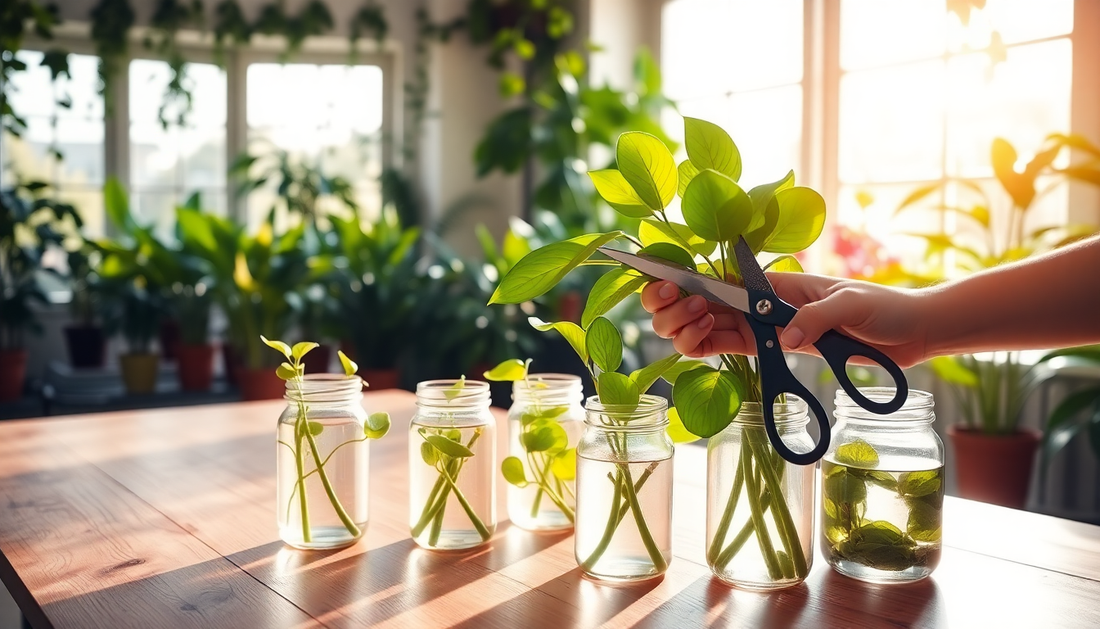
Grow Your Own Indoor Oasis: A Guide to Propagating Plants from Cuttings
In the bustling city of Bangalore, where concrete and glass dominate the skyline, there's a hidden gem that's helping urban dwellers reconnect with nature. Idyl, a one-stop shop for all your gardening needs, has become a haven for those seeking to cultivate their own indoor oasis.
At Idyl, you'll find an extensive selection of plants, fertilizers, and gardening tools, all carefully curated to cater to the needs of the modern, green-thumbed enthusiast. But what sets Idyl apart is its commitment to empowering its customers to take their gardening skills to the next level – through the art of plant propagation.
The Joy of Propagation: Bringing New Life to Your Indoor Garden
Propagating plants from cuttings is a rewarding and cost-effective way to expand your indoor garden. Not only does it allow you to multiply your favorite plants, but it also gives you a sense of accomplishment and connection with the natural world. Whether you're a seasoned gardener or a complete novice, mastering the art of propagation can open up a whole new world of possibilities for your indoor oasis.
Understanding the Basics of Plant Propagation
At the heart of plant propagation lies the simple concept of taking a cutting from an existing plant and encouraging it to grow into a new, independent plant. This process can be applied to a wide variety of indoor plants, from succulents and herbs to flowering houseplants and even some trees.
The key to successful propagation lies in understanding the specific needs of the plant you're working with. Some plants, like pothos and philodendrons, are incredibly easy to propagate, while others, like fiddle-leaf figs, may require a bit more finesse. By familiarizing yourself with the unique characteristics of your plants, you can ensure that your propagation efforts are met with thriving, healthy new additions to your indoor garden.
Choosing the Right Plants for Propagation
Not all plants are created equal when it comes to propagation. Some species are simply more adaptable and resilient, making them the ideal candidates for your first foray into the world of plant cloning. At Idyl, we recommend starting with the following easy-to-propagate indoor plants:
- Pothos (Epipremnum aureum)
- Philodendrons
- Succulents (such as jade plants and echeveria)
- Monstera deliciosa
- Tradescantia (also known as wandering jew)
- Peperomia
- Snake plants (Sansevieria)
These hardy, low-maintenance plants not only thrive in a variety of indoor conditions but also respond exceptionally well to the propagation process. By starting with these reliable options, you can build your confidence and experience before moving on to more challenging species.
Step-by-Step Guide to Propagating Plants from Cuttings
Ready to get started on your indoor plant propagation journey? Follow these simple steps to turn your existing plants into a thriving, ever-expanding indoor garden:
Gather Your Supplies
Before you begin, make sure you have the following items on hand:
- Sharp, clean scissors or pruning shears
- Clean, sterile containers or jars
- Potting mix or rooting hormone (optional)
- Water
Select the Right Cutting
When choosing a cutting, look for a healthy, vibrant stem that is free of any damage or disease. Aim to take the cutting from a section of the plant that is just below a leaf node, as this is where the new roots will emerge.
Prepare the Cutting
Using your clean scissors or shears, make a clean, diagonal cut just below a leaf node. Remove any leaves or flowers from the lower portion of the cutting, leaving only the top leaves intact.
Encourage Rooting
There are a few different methods you can use to encourage root growth in your plant cuttings:
-
Water Propagation: Place the cutting in a clean container filled with water, making sure the leaf node is submerged. Change the water regularly to keep it fresh.
-
Soil Propagation: Plant the cutting directly into a well-draining potting mix, burying the leaf node just below the surface. You can also use a rooting hormone to give the cutting an extra boost.
-
Sphagnum Moss Propagation: Wrap the cutting in damp sphagnum moss and place it in a clear container or plastic bag to maintain humidity.
Regardless of the method you choose, be sure to keep your cuttings in a warm, bright location, out of direct sunlight. Monitor the progress regularly, and be patient – it can take several weeks for the roots to develop.
Transplant and Care for Your New Plants
Once your cuttings have developed a robust root system, it's time to transplant them into their own pots. Gently remove the cutting from its propagation medium, being careful not to damage the delicate roots. Plant it in a well-draining potting mix and water it thoroughly.
Continue to care for your new plants by providing them with the appropriate amount of light, water, and nutrients. As they grow, you can gradually acclimate them to their new environment and enjoy watching your indoor garden flourish.
Unlocking the Potential of Your Indoor Oasis
Propagating plants from cuttings is not only a practical way to expand your indoor garden, but it's also a deeply rewarding and fulfilling hobby. By harnessing the power of plant cloning, you can create a thriving, ever-evolving indoor oasis that reflects your personal style and preferences.
At Idyl, we're passionate about empowering our customers to become master propagators. Whether you're a seasoned green thumb or a complete beginner, our team of experts is here to guide you through the process and help you unlock the full potential of your indoor garden. Stop by our shop or visit us online to explore our wide selection of plants, tools, and resources – and get ready to embark on an exciting journey of plant propagation.







No comments